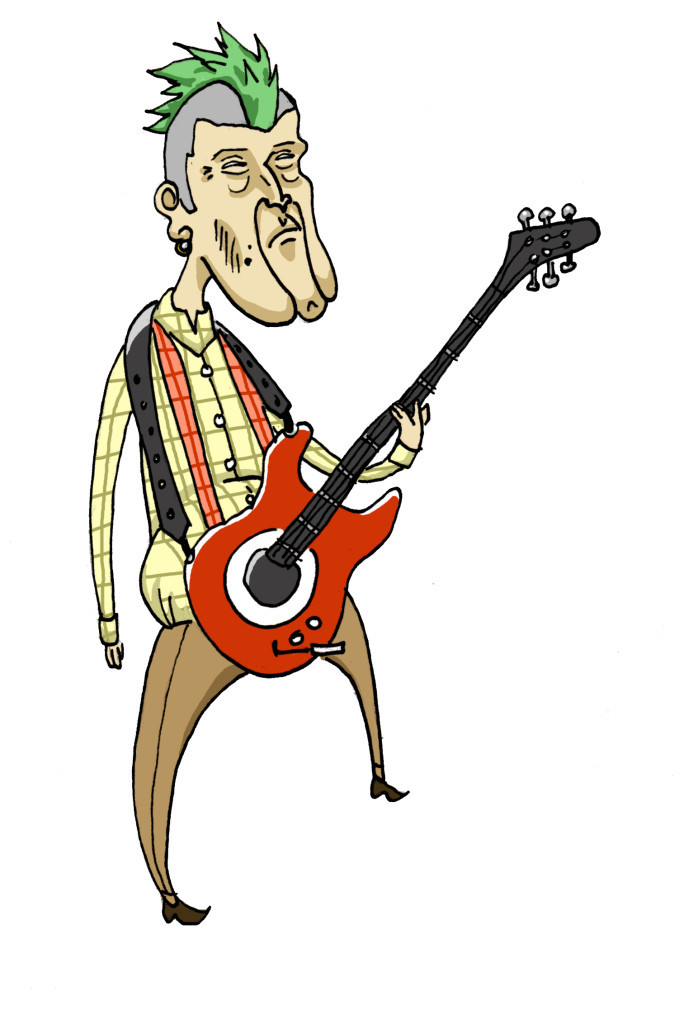
‘Vampire Hunter D’ can’t compete with modern vamp fiction
By Adam Tatelman, Staff Writer
2/5
Before Akira, there was Vampire Hunter D (VHD), an anime based on a long-running series of light novels penned by Hideyuki Kikuchi, an author best-recognized as the Japanese equivalent of H. P. Lovecraft. The stories chronicled the adventures of the unfortunately named vampire slayer “D” in a macabre future dominated by supernatural creatures. In 1985, together with the novel’s illustrator Yoshitaka Amano, Toyoo Ashida (known for Toei Animation’s Fist of the North Star) adapted the first of Kikuchi’s novels into a film that was destined to become a horror cult classic among anime fans.
VHD takes the plot of American Western Shane (lonely drifter blows into town and saves the day, but must move along despite the friends he’s made) and puts it in a fantastical world populated by vampires, werewolves, and all manner of beasts too outlandish to even name with human language. As a result, it tries to be a film that spends its time building atmosphere. Thanks to the unique setting, it does so, but at the same time it lacks dynamic characters or a complex plot.
Everyone in this movie is a plot device. D is the lonely hero who will save the villagers and move on. Doris is a determined homesteader who needs D’s help with a vampire problem. Count Magnus Lee (a reference to Christopher Lee’s Dracula) is an aristocratic vampire who wants to make Doris like him because he needs a woman’s touch in his undead life every thousand years or so.
The supporting characters are barely worth mentioning and nobody develops past their basic outline. This is only worsened by some of the flattest dub work I’ve yet heard in my anime-watching journey. D in particular sounds like he’s been huffing paint.
VHD is an early effort and it shows, but a lot of these problems can be explained by the fact that nobody at the time had a clue about production. In the ‘80s, anime for adult audiences had a bright and shiny novelty, so things like inadequate animation cycles, 10-second filler shots in an already short movie, and tinny audio were forgivable on the basis of the film’s visual creativity.
VHD is a visual treat for sure. Seeing the crumbled remains of skyscrapers at the foot of a mountain range drives home just how far in the future we are. Humanity has been reborn into an Edwardian society surrounded by lush forest and ruled by creatures of the night. Van Helsing-style desperadoes called Hunters offer their services for (occasionally lewd) payment. D’s poncho/cloak/thing could give Batman cape envy, and there is a scene where a man’s own disembodied hand gives him CPR. The Count’s fortress looks like something out of Castlevania, backgrounded by the blood-red moon.
It’s all very attractive, but you’ll predict every twist if you’ve watched any of the vampire shows doubtlessly inspired by this animated ancestor, such as Angel, Forever Knight, and Blood Ties.It’s the “Seinfeld is Unfunny” effect, meaning the more copycats there are over time, the less clever the original series seems to newcomers. Today, I can appreciate the significance of this film’s place in anime history, but that didn’t stop me from going catatonic halfway through.
Since VHD was one of the very first adult-oriented anime ever made, I have to give credit where credit is due: this was indeed a groundbreaking film in its time. Nobody, east or west, had yet seen anything that combined minimalist Western plot structure with Gothic horror iconography and Universal Studios monster mashing. It was also accomplished in a time when animation studios were underfunded and understaffed.
It’s not VHD’s fault, but times change. Due to the ocean of imitators, even the hardest of the hardcore vampire nuts will have a hard time trying to find something in this they haven’t seen before.

